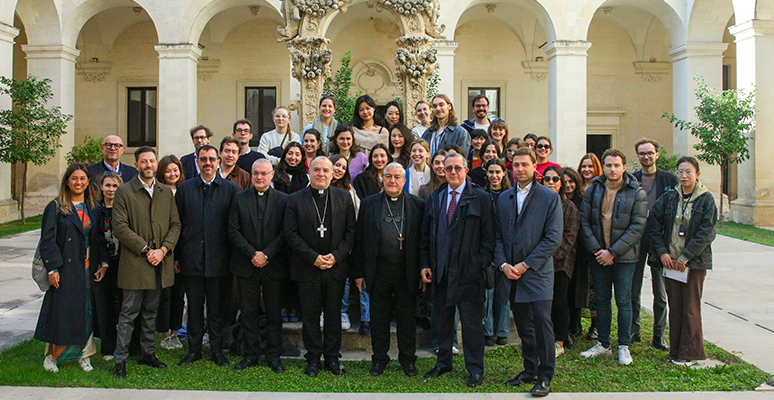Rione Sanità: an inclusive creative neighborhood in Naples
During the year at MAMA, we had the luck to be introduced to a lot of players in the cultural and creative industries in Italy, both on campus through visits of their representatives as well as on our field trips. One of the most interesting cases that we explored was that of the Rione Sanità (Santià District), located in Naples. Rione Sanità is n neighborhood with a history that is filled with paradoxes, rich with cultural heritage but also troubled with crime, unemployment, and steep education drop-out rates.
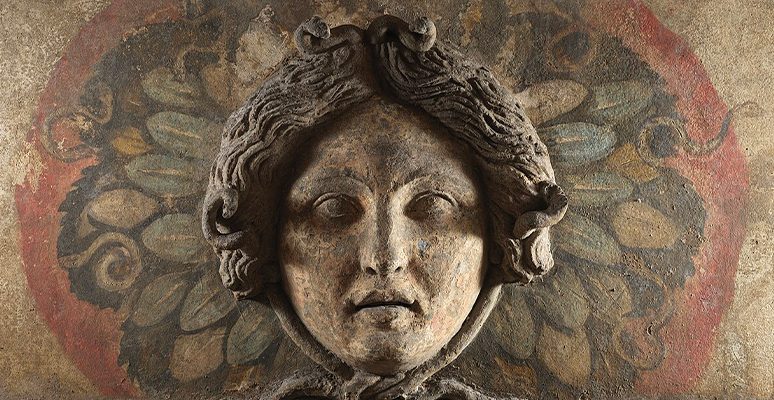
Ipogeo dei Cristallini, Rione Sanità
The interest from a cultural management and policy perspective stems from the ways that it managed to change its narrative by strengthening its identity and social cohesion through its cultural assets. The main catalyst in this transformation can be found in the actions of the La Paranza cooperative, and namely into the valorization of the Catacombe di Napoli.
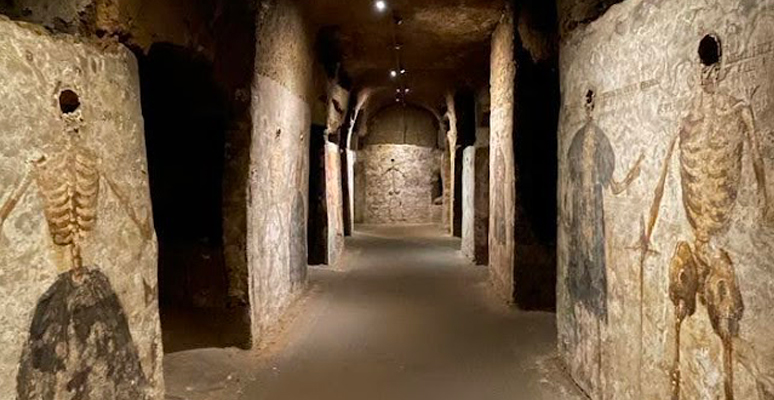
The Catacombe di Napoli
The valorization of the catacombs started in 2000 with the help of Don Antonio Loffredo, the parish priest of the Basilica di Santa Maria alla Sanità and a key figure in the transformation of the neighborhood. Don Antonio managed to gain access to the Catacombs of San Gaudioso and with a group of young volunteers from the neighborhood began to provide guided tours. This activity led to the formation of La Paranza in 2006 which now employs 40 people and manages over 13.500 sqm of heritage. La Paranza was and still is a trailblazer for the district, initially by securing funding from Fondazione con Il Sud in 2008 but also now by winning the Europa Nostra Award in 2022 and launching the first edition of European Youth Heritage Residencies in 2023.
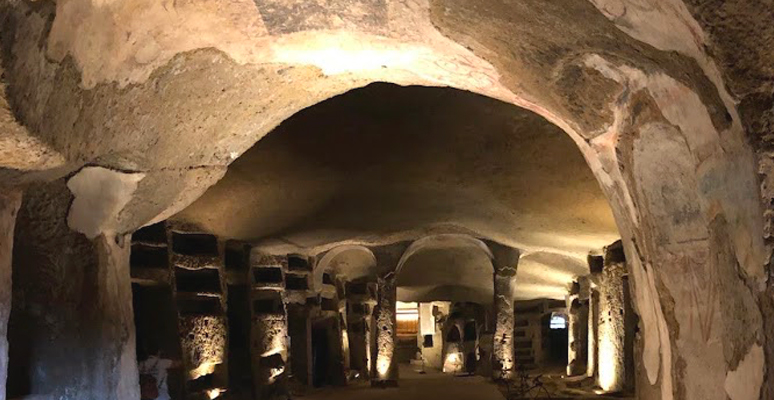
The Catacombe di Napoli
From this isolated initiative, over the years Rione Sanità has managed to become a home to over 30 nonprofit organizations and is shaping itself into a vibrant, inclusive, creative neighborhood. From projects like Sanitansamble, an El Sistema inspired initiative, to community run B&B’s like Casa del Monacone or Casa d’Anna, the district is evolving and growing as a whole with inclusivity at its core. The social impact aspect is also evident in the new heritage organizations that are beginning their activity now with examples such as Ipogeo dei Cristallini - a rare and incredible testimony of Hellenic painting and architecture, located in the heart of the district - or the Jago Museum, combining the richness of the cultural offering of the neighborhood with the representation of the community as well as looking for innovative ways of storytelling. Moreover, the engagement and employment of local people represented an incredible resource in terms of knowledge as well as positive example for the whole community. The positive impacts on the neighborhood passed also through empowerment of local businesses, such as the story of Ciro Oliva – a local pizzamaker and his family owned pizzeria Concettina ai Tre Santi.
Concrete evidence of this transformation can be found in two research projects conducted by the Department of Economic and Social Science of the University Federico II of Naples. The first study, conducted from 2009 to 2019, shows how the identity of the neighborhood has changed from being associated with "crime" to being associated with "art" and "urban regeneration." This change was measured through analysis of articles and Google Trends data. The second study, conducted in 2018, calculated the economic impact of the catacombs' activity to be over 33 million euros.
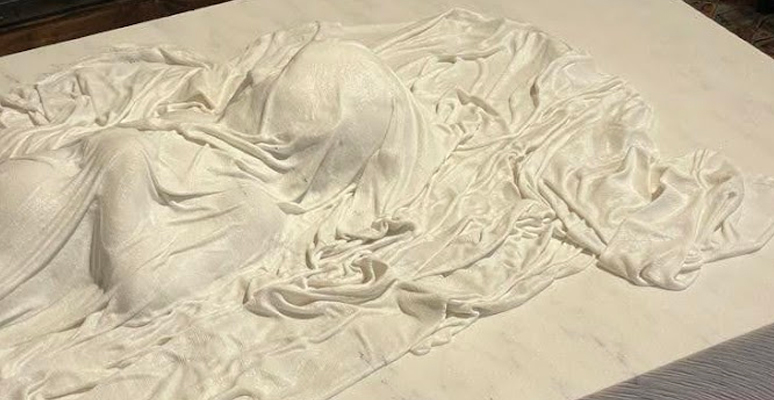
Jago, Il Figlio Velato, Cappella dei Bianchi della chiesa di San Severo Fuori le Mura, Rione Sanità
Creative Neighborhood is a term that is inspired by the concept of the Creative City. The term creative city was coined in the 1980’s referring usually to cities like New York, Amsterdam and London and it was thought as a way to model urban centers and give them a competitive advantage in a globalized era.
From the 1980’s till now the definition evolved with work of significant thought leaders such as Florida, Scott, Bianchini and others as well as the implementation and monitoring of it, with national and municipal policies as well as the European Culture Capital but remained always quite vague and malleable. Moreover, the traditional models of development of the early 2000s have been criticized due to their negative impact on the local community, with infamous examples such as Venice, Barcelona or Matera.
With the Rione Sanità example in mind, having creative neighborhoods as building blocks of a creative city helps root the concept and embed it in the urban identity shielding it from being just a marketing trick. Moreover, with bottom-up initiatives that are focused on community building and social impact, regular pitfalls such as social exclusion can be avoided and not dealt with as an afterthought.
The true challenge moving forward will be to create, evaluate and monitor a model that encompasses all relevant drivers of impact, such as in education (Grupo de Educación de Matadero Madrid 2017), health (Gordon-Nesbitt 2015), inclusion (Baltà Portolés 2016), intercultural dialogue (European Agenda for Culture 2014), the enhancement of public space (Toolis 2017) and environmental commitment (Arts Council England 2020)(Segovia & Herve (2022).
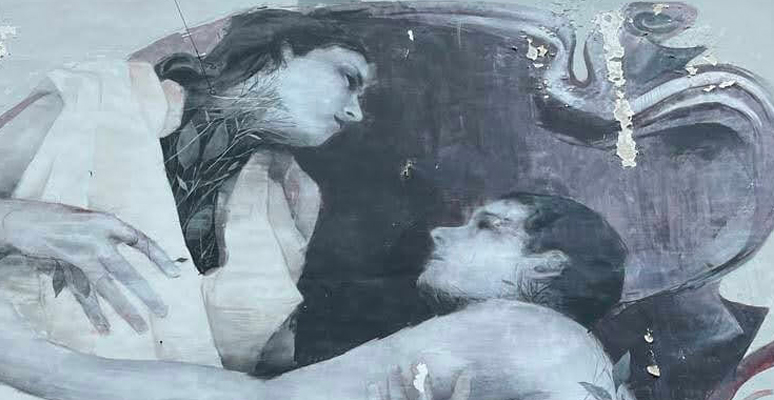
Resis-Ti-Amo”, Francisco Bosoletti, Rione Sanità
Concluding, the Rione Sanità is a shining example of how a neighborhood can transform itself through its cultural assets. Starting from the effort of a single player, the Catacombs, the neighborhood has been positively affected by the development of several cultural institutions and business opportunities, rooted within the community. Additionally, it can serve as a guideline for creative placemaking with social impact and inclusivity at its core.
References
Università della Campania L. Vanvitelli e di Scienze Sociali dell’Università di Napoli Federico II, Le catacombe di Napoli l’impatto sociale ed economico,2019.
Grupo de Educación de Matadero Madrid (2017) Ni arte ni educación: Una experiencia en la que lo pedagógico vertebra lo artístico.
Gordon-Nesbitt R (2015) Exploring the longitudinal relationship between arts engagement and health.
Baltà Portolés (2016) Las políticas culturales de la Unión Europea : potencialidades para España.
Toolis EE (2017) Theorizing critical placemaking as a tool for reclaiming public space.
European Agenda for Culture (2014) Report on the role of public artsand cultural institutions in the promotion of cultural diversity and intercultural dialogue 2011–2014.
Arts Council England (2020) Sustaining great art and culture: Environmental report 2018/19.
Segovia & Herve (2022) The creative city approach: origins, construction and prospects in a scenario of transition.
SDA Bocconi School of Management
MAMA turns 10: a conversation with new ...
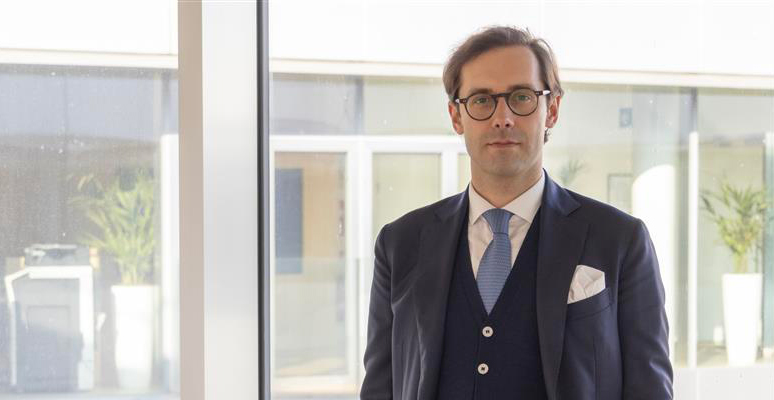
Shaping the Future Leaders of Arts ...
